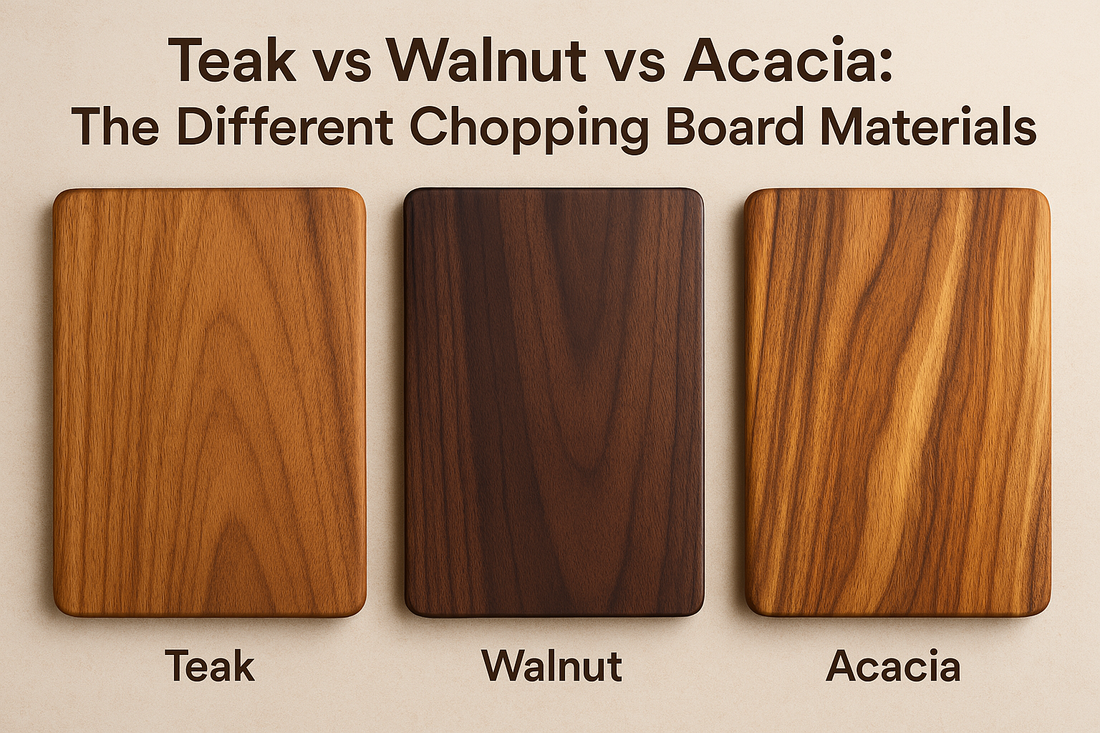
Share
When it comes to choosing a chopping board, the type of wood you select can significantly impact your kitchen experience. From knife-friendliness to moisture resistance and aesthetic appeal, not all woods are created equal. In this guide, we’ll explore three of the most popular materials — Teak, Walnut, and Acacia — and explain why Teak is the best all-around option.
🌳 Teak: The Gold Standard
Teak is the top choice for both home cooks and professional chefs — and for good reason.
- 🌿 Naturally rich in oils, making it highly water-resistant
- 🔪 Gentle on knives yet durable enough to resist deep cuts
- 🛠️ Low maintenance — no need for constant oiling
- 🌡️ Resistant to warping and cracking in humid conditions
Teak’s golden-brown color and smooth grain pattern add a warm, luxurious look to any kitchen. It’s the perfect balance of beauty and practicality — and that’s exactly why we use only premium teak wood in our chopping boards at Javanti Kayu.
🌰 Walnut: Sleek & Sophisticated
Walnut boards are loved for their deep chocolate tones and elegant grain.
- ✨ Gorgeous dark appearance
- 🪵 Dense yet not too hard on knives
- 📏 Ideal for presentation or light daily use
However, walnut requires more upkeep — it’s less moisture-resistant than teak and needs regular oiling to stay vibrant.
🌿 Acacia: Sustainable & Striking
Acacia is a hard, fast-growing wood often marketed as eco-friendly.
- 🌱 Affordable and sustainable
- 🧼 Naturally antibacterial
- 🎨 Bold, dramatic grain
While acacia looks striking, it’s very hard — which can dull knives — and requires careful maintenance to avoid cracking.
Why We Use Teak at Javanti Kayu
We handcraft every chopping board with premium-grade teak because it delivers the best balance of durability, design, and ease of use. Teak is not only naturally beautiful — it’s built to last, withstanding the daily demands of your kitchen.
If you're looking for a reliable, beautiful, and long-term investment for your cooking space, teak is the way to go.
Summary
| Material | Pros | Cons |
|---|---|---|
| Teak | Water-resistant, knife-friendly, low-maintenance, durable | Slightly higher price |
| Walnut | Beautiful grain, dense but not too hard | Requires frequent oiling, less moisture-resistant |
| Acacia | Affordable, antibacterial, sustainable | Very hard on knives, needs careful maintenance |
Explore our full collection of handcrafted teak chopping boards here.